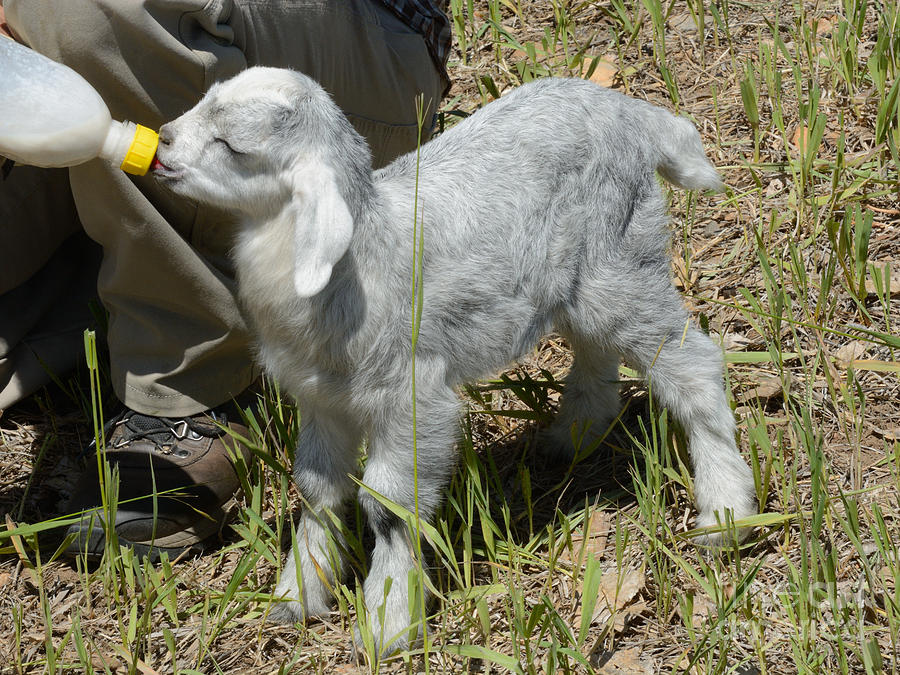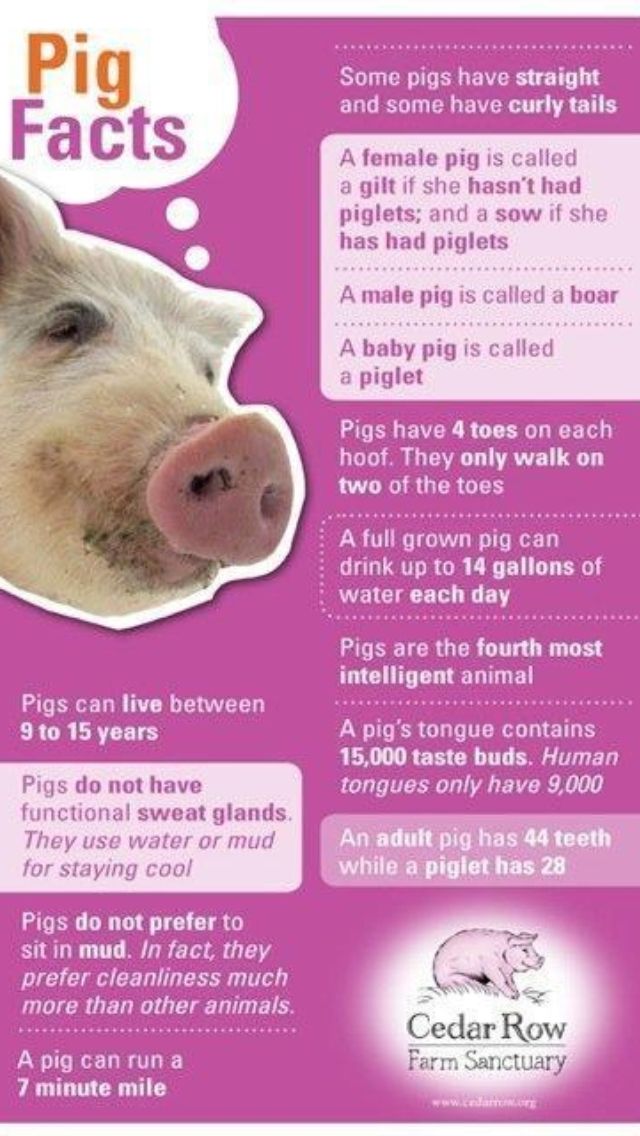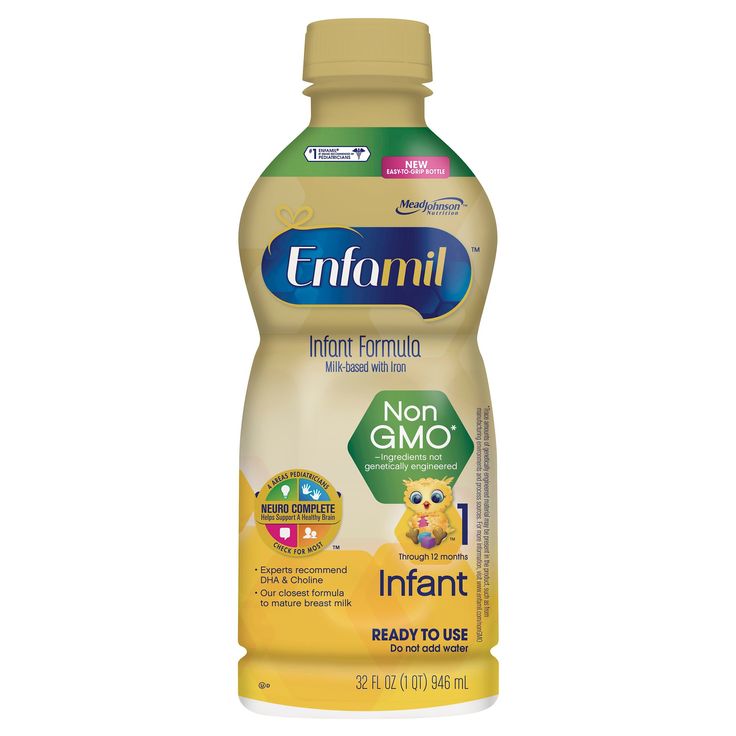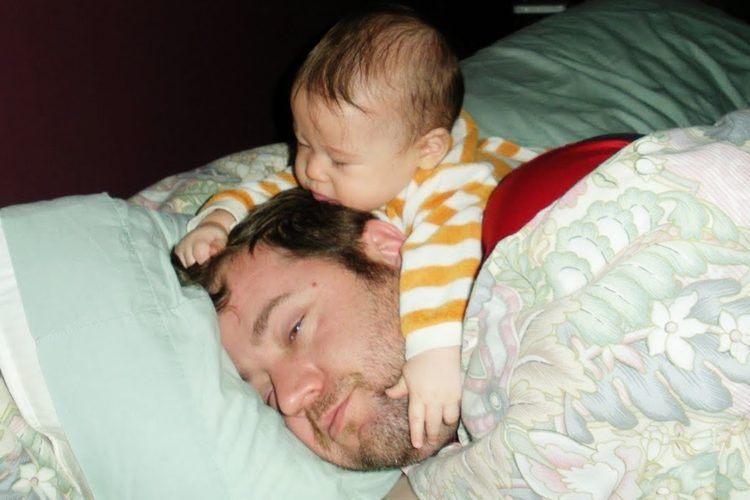Big baby feeding
8 Tips for Breastfeeding with Larger Breasts
For women who have large breasts, breastfeeding may feel like a daunting challenge, but, getting it right is about making sure you and baby can feed with good positioning and attachment...
Share this content
Get a Good Bra Fitted
Firstly, it is important to have good bra support and to go and get correctly measured for a well-fitting and comfortable maternity bra. You may need to do this about 3 times from pregnancy to after birth, as your breasts will be changing shape along your journey. It’s very important that you do not wear an underwire bra or a bra which is too small and cuts into your skin.
Your breasts start making milk (colostrum) in the cells from around 16 weeks pregnant. Having too much pressure on your delicate breast skin from this point may put you at risk of developing blockages and pain. This is particularly important once your milk comes in after birth as this can also restrict the flow of milk to your baby.
The reason why it is best to go and have a proper bra fitting is that most of us women are actually wearing the wrong bra size to start with! This is not a time to be walking around with an incorrect fit.
Understand the Difference Between Breast Size and Milk Output
All breasts come in a variety of shapes and sizes. We are all different and this is normal. A common myth is that a woman with larger breasts makes more milk than a woman with smaller breasts.
Actually, the truth is that the size of your breast does not dictate how much milk you will be able to make. It’s about how much milk the cells inside your breast can make and this is not based on breast size.
The breasts are made up of glandular tissue (containing the milk-making cells), fatty tissue which often represents the size of our breast, and connective tissue.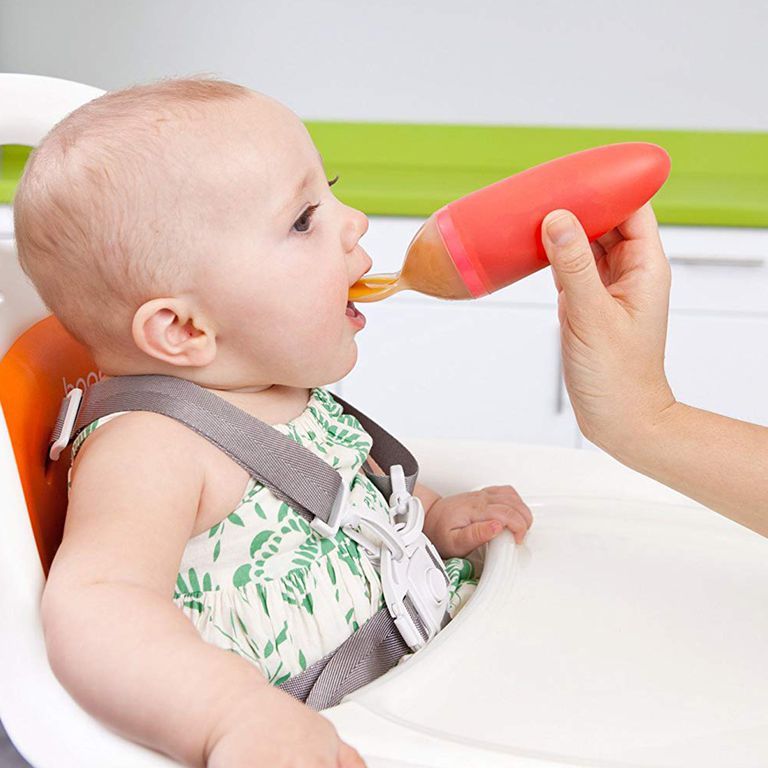 So we cannot assume a woman with G cup breasts will have more milk than the woman with C cup breasts.
So we cannot assume a woman with G cup breasts will have more milk than the woman with C cup breasts.
Learn About Feeding Ergonomics
Often we may only see images of 3 ways of breastfeeding, but this is not true at all. Remember the breast and the baby’s mouth are round, so technically any position is possible… that doesn’t mean it’s comfortable though! And comfort is the key here. The key to successful breastfeeding is getting the positioning and attachment right for mum and baby.
No matter what size breasts they have some mums and babies breastfeed from the beginning with no problems at all, while other mums and babies take a little bit more time to get things right.
Feeding with larger breasts is about being comfortable and being able to see what baby is doing when they attach. Both of these can take a little practice, for any mum.
Give Your Breasts the Support they Need
Many mums find that using a pillow in the early days can help position baby at the right height so they can see baby’s mouth clearly. It’s really important to watch out that you don’t lift your baby up on a pillow above the height of your naturally resting nipple.
It’s really important to watch out that you don’t lift your baby up on a pillow above the height of your naturally resting nipple.
If you do this then you’ll end up lifting your breast to meet your baby’s mouth and will find as soon as you let go of your breast the weight of the breast will pull the nipple out of baby’s mouth! So the key here is to bring baby to the level of your resting nipple.
Other ways of tilting your nipple upwards so you have a better view of your baby’s mouth next to your nipple is to use a rolled-up cloth nappy/thin bunny rug and placing it under your breast. This can really increase your viewing. You may also like to try breastfeeding in front of the mirror so you can see where baby is attaching, until you feel more confident.
Look for Positions that Work for You
Try lots of different positions. There is no one perfect position for every mother, and most mums use a variety of styles depending on whether they are at home, out and about or lying down.
Laid back feeding styles can be really helpful for every breast shape and size as it allows your baby to use their innate reflexes to find the breast and attach themselves. You can find some helpful information here.
Other positions are the modified cradle hold, where baby sits/lies in your lap and is supported behind their shoulders to attach onto the breast. Some mums like the underarm hold as baby is supported beside you and mums often feel like they have support of their baby’s head and neck as well as a perfect view of baby’s mouth, while others love lying down to feed.
These are all positons you can practice with the help of your midwife in hospital and at home.
Consider Shaping the Breast
Lots of mums find it helpful to shape their breast just before baby attaches on to the nipple and underneath part of the areola. Shaping can help baby get a deeper attachment.
It’s important that baby is not just sucking on the end of the nipple. In order to drain the milk effectively and cause no pain baby needs to have the nipple and some of the areola in his mouth.
In order to drain the milk effectively and cause no pain baby needs to have the nipple and some of the areola in his mouth.
Babies do not have to take all of your areola in their mouths! But if you have small areola then he may take it all. There are two ways of holding your breast; it is often called the hamburger technique!
Imagine you are eating a really full, delicious burger (veggie burger for the vegetarians). Think about how you pick it up. You will squeeze it to reduce the size so that you can have a bite of the bun, filling and the burger.
Then you tilt your head back slightly, and bring your bottom lip to the bun first, almost hooking your mouth over the whole burger, so you can fit more in your mouth.
This is what babies do when they come to the breast to feed, tilt their head slightly, and come onto the breast lower lip first with their chin leading.
So shaping the breast can be helpful for some mums and babies to enable baby to get a deeper attachment on the breast.
How do you do it? If you are holding baby in cradle hold then you want to hold your breast in a “U” shape, from underneath your breast. If you are holding baby in an underarm hold you will need to hold your breast in a “C” shape, from the side of your breast.
Wear Clothes That Give You Confidence
Many mums worry that they will be exposing themselves a lot if they have larger breasts. Here are a few tips if you are feeling self-conscious. Practice feeding your baby in the mirror first before you go out.
Try out different tops to find the ones you feel most comfortable feeding in and wear those for your first feeds in public. Try wearing a breastfeeding cami top underneath your t-shirt so you still feel covered whilst feeding.
On your first trip breastfeeding in a café or public place find a secluded chair to feed. Once you find your confidence and breastfeeding style you’ll find breastfeeding out and about to be no problem at all and the easiest method of feeding your baby.
Don’t Be Afraid to Seek Out Advice and Support
Never feel concerned about how much support you need when learning to breastfeed. Nearly every mum finds some aspects of breastfeeding challenging at first and will have good and bad days.
Utilise your local breastfeeding support centres and their lactation consultants and maternal child health nurses until you are feeling confident. There is nothing better than a bit of coaching and TLC from a warm and friendly breastfeeding specialist to help you feel that you can do this!
For more information and updates on breastfeeding join us at our Medela Australia Facebook page.
Do you know someone who has had to learn how to breastfeed with breasts that are on the larger side? What tips did they share with you? Please join the conversation.
Why Your Supersized Baby Is Perfect
When my son was born, he weighed in at a very solid 8 pounds,13 ounces. In 2012, that raised a few eyebrows and elicited some empathetic grimaces from fellow moms. But just a few years later, my “big guy” now seems kind of average. Especially compared to these bouncing babes…
But just a few years later, my “big guy” now seems kind of average. Especially compared to these bouncing babes…
In 2014, a 14.5-pound baby was born in Massachusetts. In 2015, there were a number of babies born who weighed between 12.9 and 14.7 pounds. And in 2016, not to be outdone by the Western mothers, a 19-year-old mother in India gave birth to a 15-pound baby girl.
To say the least, those were some big babies! To put those numbers into perspective, consider this: An average baby weighs around 7.5 pounds at birth.
It’s not our imaginations that babies have been getting bigger in recent years, and it’s not just that the internet is whipping everyone into a frenzy. According to research, there has been a 15 to 25 percent increase in babies weighing 8 pounds, 13 ounces or more in the past 20 to 30 years in the developed world. This was, as a reminder, my son’s weight at birth — apparently the weight at which babies are considered “oversized” nowadays. The medical term for that is “macrosomia,” but “very big baby” will do in casual conversation.
This is a source of endless fascination for people, though men and women tend to have very different reactions to this phenomenon.
Men hear about it and think, Oh, wow, that’s crazy. And then they move on.
Women, on the other hand, involuntarily shrink inward, break into a cold sweat and think, Dear God, how does that happen? Could that happen to me? Even women who aren’t planning to have more children — or who don’t plan to have any children at all — can’t help but feel extremely empathetic in their lady parts because they’re all too aware that even the biggest baby has to come out somehow. And, well, ouch.
You might think the moms of these big babies would all need to have C-sections. Indeed, there’s a much greater likelihood of needing one if you have a bigger baby, but, believe it or not, that’s not always the case. Yes, that’s right: A 15-pound baby can be delivered vaginally. That’s how a little (or not-so-little) bundle of joy named George King came into the world in 2013.
Baby George weighed in at 15 pounds, 7 ounces and was reportedly the second-biggest baby ever to be delivered naturally in the United Kingdom. But it was not an easy delivery: His head and shoulders got stuck, and he was without oxygen for five minutes. Doctors — and there were 20 present to assist at his birth, according to the baby’s mother — gave him only a 10 percent chance of survival. But he defied the odds and not only survived but ended up leaving the hospital healthy a month later.
But that’s where things can get scary with supersized babies. One of the big risks when delivering a baby with macrosomia is a condition called shoulder dystocia, where the shoulders can get stuck behind the mother’s pubic bone. Doctors can solve this issue more easily when delivering smaller babies, but it can be much more difficult with larger children. It can lead to a dislocation of the baby’s shoulder or, more commonly, a fracture of the baby’s clavicle (collar bone), as well as cause tearing or pelvic-floor damage for the mother.
But to leave this on a happy, less frightening note: Large babies can absolutely be delivered safely. Earlier this year, an Australian mom gave birth naturally — with only laughing gas to ease the pain of labor — to a 13.4-pound baby boy without any complications, aside from not being able to fit into any of his newborn clothes, that is.
That’s the question on everyone’s mind, but there’s no single answer.
For some women, gestational diabetes (GD) plays a role. Nearly 18 percent of pregnant women may be diagnosed with this pregnancy-only form of diabetes, in which the body cannot regulate blood sugar properly. Aside from dangers for the mother during pregnancy, including being at a higher risk for preeclampsia, GD can produce a particularly large baby. GD also increases the risk of premature birth, which means the baby could be born with underdeveloped lungs. Later in life, babies born to mothers who had GD are also at a greater risk of developing obesity and diabetes.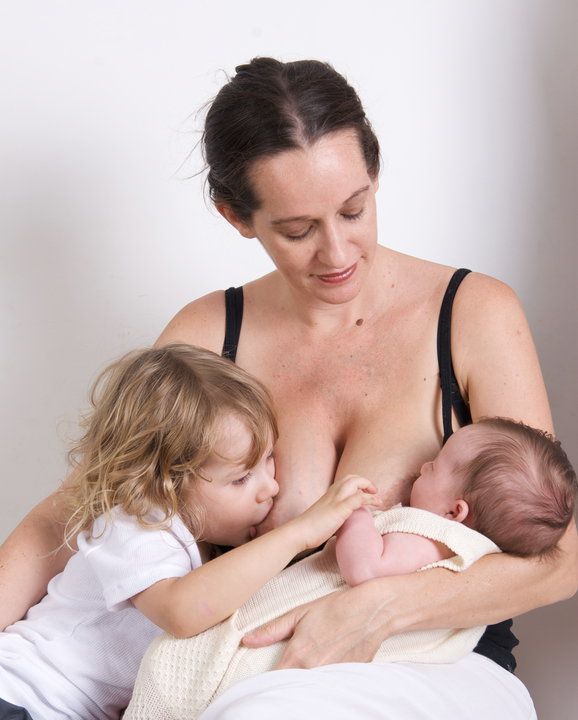
Even without gestational diabetes, maternal obesity can play a role in creating a supersized baby. But plenty of plus-sized women also give birth to small or average-sized babies. Still, to increase your chances of having a healthy-sized baby, you’ll want to keep your own weight in check before you get pregnant, as well as eat well and exercise regularly during your pregnancy.
Healthy babies come in all shapes and sizes. That’s important to remember when yours makes its big debut. Keep this in mind over the course of the first month: Every kid grows at a different rate because every kid is different!
One big thing that first-time parents may not realize is that babies always lose weight immediately after birth. A 5 to 7 percent weight loss is normal for formula-fed newborns, while breastfed babies may lose up to 10 percent of their initial birth weight. All babies, both formula-fed and breastfed should be back up to their birth weight within 10 to 14 days. That said, your doctors will closely monitor your baby’s weight and suggest interventions if they’re concerned.
Something else to keep in mind: Breastfed and bottle-fed infants also gain weight at different rates. Plus, while you can’t overfeed a baby when breastfeeding, formula is a different story. If your bottle-fed baby is gaining a lot of weight quickly, your doctor may have questions about feedings. For example: If your infant cries, do you immediately respond with a bottle? Are you sure that’s what your baby wants — not a diaper change, a burp, or a cuddle? Understanding your baby’s cues is the key to feeding your baby the right amount.
Being a new mom is stressful, especially when it comes to feeding your baby and, let’s face it, also when it comes to nearly everything else. It’s tough to remember what to ask your doctor. Here are some handy lists of questions to ask so you leave your appointment armed with information you want about your baby’s weight and size.
2 days old
- How much weight has my baby lost? Is that a normal amount?
- Does my baby seem to be eating well? (If you’re breastfeeding, also consult a lactation specialist.
 )
) - How much and how frequently should my baby be eating?
2-week checkup
- How much weight has my baby gained back? Is that a normal rate of weight gain?
- How much and how frequently should my baby be eating?
1-month checkup
- How much and how frequently should my baby be eating?
- What percentile is my baby for height and weight?
- Is my baby gaining weight appropriately, according to the growth curve?
It’s easy to get wrapped up in how big our babies are at birth, especially if they were indeed large. But it’s important to remember this: Your little one is still very little, and what’s most important is creating healthy habits from here on in. If you know what’s normal and appropriate, you’ll be able to keep your baby well-fed, healthy, and happy.
The bottom line: Be healthy and active during your pregnancy, start your prenatal care visits early, and then relax. You can only do so much to control your baby’s birth weight. Personally, I like to think of this as good training for motherhood. Life with kids rarely goes according to plan. You just have to roll with it and hope for the best. And you know what? It’s usually all fine in the end.
Personally, I like to think of this as good training for motherhood. Life with kids rarely goes according to plan. You just have to roll with it and hope for the best. And you know what? It’s usually all fine in the end.
Share on Pinterest
Dawn Yanek lives in New York City with her husband and their two very sweet, slightly crazy kids. Before becoming a mom, she was a magazine editor who regularly appeared on TV to discuss celebrity news, fashion, relationships, and pop culture. These days, she writes about the very real, relatable, and practical sides of parenting at momsanity.com. Her newest baby is the book “107 Things I Wish I Had Known with My First Baby: Essential Tips for the First 3 Months.” You can also find her on Facebook, Twitter and Pinterest.
Various breastfeeding positions
Try different breastfeeding positions to find the one that works best for you and your baby. You can see the options in our selection of photos
You can see the options in our selection of photos
Share this information
There is no right or wrong way to hold the baby while
feeding, and mom and baby are sure to find their favorite position.
It is important that both you and your child feel comfortable. nine0011 1.2 It's good to learn a few different breastfeeding positions and techniques because life's circumstances often require us to be flexible, especially as your baby gets older and you start to leave the house more often.
Whatever position you choose to breastfeed your baby, remember a few simple rules.
- Prepare everything you need before feeding, including drinks, food, mobile phone, TV remote control, book or magazine. And do not forget to go to the toilet - the feeding process can take a long time! nine0018
- Make sure your baby is comfortable. Whichever position you choose, it's important to keep your baby strong, level, and provide good support for their head, neck, and spine.
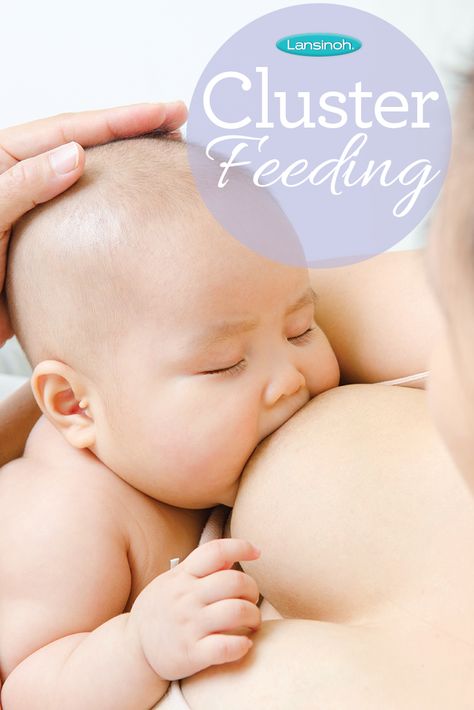
- You should also be comfortable. Don't stress. If necessary, use pillows of different sizes or rolls of towels to support your back or arms.
- Make sure your baby is latching on correctly. Proper grip is the key to comfort when breastfeeding. nine0018
- If your baby does not latch on well or you experience pain while feeding, contact a lactation consultant for help. The specialist will also be able to show you how to hold your baby more comfortably.
1. Relaxed feeding or reclining position
The relaxed feeding position, also known as biological feeding, 1 is often the first position for most mothers. If, immediately after birth, the baby is placed on the mother’s chest or stomach, normally, he instinctively reaches for the breast and tries to grab the nipple. This phenomenon is known as the breast seeking reflex. Skin-to-skin contact stimulates the infant's feeding instinct, and gravity helps him to latch onto the breast and maintain balance. nine0003
nine0003
But it's not just newborns that can be fed in the reclining position - this position is great for babies of all ages. It can be especially helpful if your baby does not latch well in other positions or does not like to be touched during feeding, and also if you have too much milk flow or too large breasts. Isabelle, a mother from the UK, shares her experience: “I had large breasts, and the baby was born small - 2.7 kg, so it was not easy to find a comfortable position at first. After a few weeks, it became clear that there was no “correct” posture for me. As a result, I most often fed lying down, putting the baby on my chest. ” nine0003
It is more convenient to feed not lying flat on your back, but half-sitting, leaning on pillows. So you will have a back support and you will be able to watch the baby during feeding.
2. Cradle position
This is the classic
first thought of breastfeeding. Mom sits straight
, and the baby lies on her side on her arm, pressing his stomach against her stomach. 3 Although this is a very popular position, it is not always easy to master with newborns because it gives the baby less support. Try putting a pillow under your back, and put a special breastfeeding pillow on your knees and lean on it with your hands. So you can more reliably support the child, without overstraining your back and shoulders. Just make sure that the baby does not lie too high on the pillow for feeding. The breast should remain at a natural level so that the baby can grab it without effort, otherwise sore nipples cannot be avoided. nine0003
3 Although this is a very popular position, it is not always easy to master with newborns because it gives the baby less support. Try putting a pillow under your back, and put a special breastfeeding pillow on your knees and lean on it with your hands. So you can more reliably support the child, without overstraining your back and shoulders. Just make sure that the baby does not lie too high on the pillow for feeding. The breast should remain at a natural level so that the baby can grab it without effort, otherwise sore nipples cannot be avoided. nine0003
“I breastfed in the cradle position because it suited me perfectly! It was comfortable and I loved just sitting and looking at my little one,” recalls Rachel, a mother of two from Italy.
3. Cross Cradle
This breastfeeding position looks almost the same as Cradle, but the baby is on the other arm. 3 This gives your baby support around the neck and shoulders so he can tilt his head to latch on. This position is great for breastfeeding newborns and small babies, as well as for babies who do not latch well. Since the baby lies completely on the other hand, it becomes easier to control his position and you can adjust the chest with your free hand. nine0003
This position is great for breastfeeding newborns and small babies, as well as for babies who do not latch well. Since the baby lies completely on the other hand, it becomes easier to control his position and you can adjust the chest with your free hand. nine0003
Julie, a UK mother of two, finds this position very practical: “I usually breastfeed my youngest in the cross cradle position. So I have a free second hand, and I can take care of an older baby at the same time. ”
Do not hold the baby's head at first, otherwise you may inadvertently press his chin against his chest. Because of this, the child will not be able to take the breast deeply, because the nipple will rest against the base of the tongue, and not against the palate, which will lead to inflammation of the nipples. As the child grows, this position becomes more comfortable, and he can rest his head on your palm (as shown in the photo above). nine0003
4. Underarm breastfeeding
In this position, also known as the “ball grip”, the mother sits with the baby lying along her arm at the side, legs towards the back of the chair (or any other seat). 3 Another comfortable position for newborn breastfeeding, you can give your baby good support, full control of his position and a good view of his face. And the baby feels safe in close contact with the mother's body. This position is especially good for those who have had a caesarean section or a premature birth, as well as mothers of twins and women with large breasts. nine0003
3 Another comfortable position for newborn breastfeeding, you can give your baby good support, full control of his position and a good view of his face. And the baby feels safe in close contact with the mother's body. This position is especially good for those who have had a caesarean section or a premature birth, as well as mothers of twins and women with large breasts. nine0003
“When I breastfed my first daughter, I had very large K-sized breasts—twice the size of her head,” recalls Amy, an Australian mother of two. - I put rolls of towels under each breast, because they were very heavy, and fed my daughter in a pose from under the arm, but only sitting straighter so as not to crush her. This position was also convenient because I had a caesarean section and could not put the baby on my stomach.”
5. Side-lying position
The side-lying position is ideal for a relaxed
nighttime feeding in bed or on the couch. If you had a
caesarean section or ruptures during childbirth, this position may be more comfortable than sitting down. 3 In this position, mother and baby lie side by side, tummy to tummy.
3 In this position, mother and baby lie side by side, tummy to tummy.
“It was difficult for me to sit during endless night feedings, firstly because of the caesarean section, and secondly because of lack of sleep,” recalls Francesca, a mother from the UK. “And then I discovered that you can feed your baby lying on your side and rest at the same time.” nine0003
“Because of the short tongue frenulum, Maisie could only properly latch on to her breasts while lying on her side. The lactation consultant showed me how it's done. In this position, the flow of milk was optimal for my daughter, and it was easier for her to keep the nipple in her mouth. As she got older, she became much better at grabbing her breasts in normal positions,” says Sarah, mother of two from Australia.
6. Relaxed breastfeeding after caesarean section
If you can't find a comfortable position for breastfeeding after caesarean section, 3 try holding the baby on your shoulder in a reclining position – this does not stress the postoperative suture and allows you to breastfeed your baby comfortably. You can also try side feeding.
You can also try side feeding.
7. Sitting upright breastfeeding or “koala pose”
When breastfeeding in an upright position or “koala pose”, the baby sits with a straight back and a raised head on the mother's hip. 4 This position can be tried even with a newborn if it is well supported, but it is especially convenient for feeding a grown child who can already sit up by himself. The upright sitting position, or “koala pose,” is great for toddlers who suffer from reflux or ear infections and feel better sitting. In addition, this pose may be suitable for children with a shortened frenulum of the tongue or reduced muscle tone. nine0003
“When my daughter got a little older, I would often feed her in an upright position, which was more comfortable for both of us, and I could still hold her close,” recalls Peggy, a mother from Switzerland. “Besides, it was possible to discreetly breastfeed her in public places.”
8. Overhanging position
In this position, the baby lies on his back, and the mother bends over him
on all fours so that the nipple falls directly into his mouth. 4 Some moms say this breastfeeding position is good to use occasionally for mastitis, when touching the breasts is especially unpleasant. Some say that this breastfeeding position helps with blockage of the milk ducts, although there is no scientific evidence for this yet. You can also feed in the “overhanging” position while sitting, kneeling over the baby on a bed or sofa, as well as reclining on your stomach with support on your elbows. Pillows of various sizes that you can lean on will help you avoid back and shoulder strain. nine0003
4 Some moms say this breastfeeding position is good to use occasionally for mastitis, when touching the breasts is especially unpleasant. Some say that this breastfeeding position helps with blockage of the milk ducts, although there is no scientific evidence for this yet. You can also feed in the “overhanging” position while sitting, kneeling over the baby on a bed or sofa, as well as reclining on your stomach with support on your elbows. Pillows of various sizes that you can lean on will help you avoid back and shoulder strain. nine0003
“I have breastfed several times in the 'overhang' position for clogged milk ducts when no other means of dissolving the blockage worked. And this pose seems to have helped. I think it's because of gravity, and also because the breasts were at a completely different angle than with normal feeding, and my daughter sucked her differently, ”says Ellie, a mother of two from the UK.
Feeding in the "overhanging" position is unlikely to be practiced regularly, but in some cases this position may be useful. nine0003
nine0003
“I used to breastfeed in the overhang position when my baby was having trouble latch-on,” says Lorna, mother of two in the UK. - This, of course, is not the most convenient way, but then I was ready for anything, if only he could capture the chest. We succeeded and have been breastfeeding for eight months now!”
9. Breastfeeding in a sling or in a sling
Breastfeeding in a sling takes some practice, but it can be used to go out, look after older children, or even do a little household chores. nine0003
The sling is also useful if the baby does not like to lie down or is often attached to the breast. Lindsey, a mother of two in the US, notes: “I used the carrier frequently for both of my children. When we were out, I tied the sarong around my neck and covered the carrier with it. Under such a cape, the baby can eat as much as he wants until he falls asleep.
This breastfeeding position is best when the baby is already good at breastfeeding and can hold his head up by himself. Any slings are suitable for breastfeeding, including elastic and rings, as well as carrying bags. Whatever option you choose, the main thing is that you can always see the face of the child, and his chin does not rest against his chest. nine0003
Any slings are suitable for breastfeeding, including elastic and rings, as well as carrying bags. Whatever option you choose, the main thing is that you can always see the face of the child, and his chin does not rest against his chest. nine0003
10. Double hand-held breastfeeding
Double hand-held breastfeeding (or “double-ball grab”) is great for mothers of twins—you can breastfeed both at the same time and keep your arms relatively free. 4 When feeding in this position, it is advisable to use a special pillow for breastfeeding twins, especially at first. It will provide extra support and help keep both babies in the correct position, as well as reduce the burden on the abdomen if you had a caesarean section. In addition, the hands are freer, and if necessary, you can deal with one child without interfering with the second. nine0003
“My twins were born very tiny and had to be fed every two hours at any time of the day or night. Very soon it became clear: if I want to do anything besides feeding, I need to feed them both at the same time, - says Emma, mother of two children from the UK. “I breastfed them two by hand using a breastfeeding pillow.”
“I breastfed them two by hand using a breastfeeding pillow.”
Other good positions for breastfeeding twins are two criss-cross cradles, one baby in the cradle and the other close at hand, reclining feeding, or sitting upright (one baby on one side, the other on the other). nine0003
11. Breastfeeding in the "hand-supported" or "dancer's hand" position
muscle tone (which is typical for premature babies, children suffering from various diseases or Down syndrome), try supporting his head and your chest at the same time. 4 Grasp your chest with your palm underneath so that your thumb is on one side and all the others are on the other. Move your hand slightly forward so that your thumb and forefinger form a "U" just in front of your chest. With the other three fingers, continue to support the chest. With your thumb and forefinger, hold the baby's head while feeding so that his chin rests on the part of the palm between them, your thumb gently holds the baby on one cheek, and your index finger on the other. So the baby gets excellent support, and you can control his position and see if he is holding his breast. nine0003
So the baby gets excellent support, and you can control his position and see if he is holding his breast. nine0003
Literature
1 Colson SD et al. Optimal positions for the release of primitive neonatal reflexes stimulating breastfeeding. Early Hum Dev . 2008;84(7):441-449. - Colson S.D. et al., "Optimal Positions for Provoking Primitive Innate Reflexes to Induce Breastfeeding." Early Hume Dev. 2008;84(7):441-449.
2 UNICEF UK BFHI [ Internet ]. Off to the best start ; 2015 [ cited 2018 Feb ]. - UNICEF UK, Baby-Friendly Hospital Initiative, Start the Best You Can [Internet]. 2015 [cited February 2018].
3 Cadwell K. Latching - On and Suckling of the Healthy Term Neonate: Breastfeeding Assessment. J Midwifery & Women's Health. nine0133 2007;52(6):638-642. — Cadwell, K., "Latching and sucking in healthy newborns: evaluation of breastfeeding." F Midwifery Women Health. 2007;52(6):638-642.
J Midwifery & Women's Health. nine0133 2007;52(6):638-642. — Cadwell, K., "Latching and sucking in healthy newborns: evaluation of breastfeeding." F Midwifery Women Health. 2007;52(6):638-642.
4 Wambach K, Riordan J, editors. Breastfeeding and human lactation. Jones & Bartlett Learning ; 2014. 966 p . - Wambach K., Riordan J., "Breastfeeding and female lactation". Burlington, MA: Publishing House Jones & Bartlett Learning ; 2014. Pp. 966.
Feeding a sick child
Publication date: 12/15/2016 08:22
April 22nd, 2016 Olga.
While the child grows up, he will be ill with various diseases more than once. About 80% is accounted for by SARS. Any disease (we are now talking about the flu, SARS) is characterized by poor health of the child - malaise, cough, runny nose, weakness, and maybe intestinal upset. And all this affects the appetite of the child. If a child has caught a cold, mothers always ask themselves the question: how to feed him properly? Proper nutrition of a sick child will help to quickly cope with the disease. nine0003
And all this affects the appetite of the child. If a child has caught a cold, mothers always ask themselves the question: how to feed him properly? Proper nutrition of a sick child will help to quickly cope with the disease. nine0003
During an illness, the baby always has a poor appetite. There are physiological reasons for this:
- at elevated temperatures, blood circulation in the stomach slows down. because the body sends blood to vital organs: the heart and lungs. The process of digestion and assimilation of food slows down and the child needs less food than usual;
- during illness, the liver actively fights with toxins, the products of the vital activity of viruses and the decay of damaged cells, so a large amount of food carries an additional burden; nine0018
- the toxins themselves poison the body and the child, when he feels bad, not at all before eating;
- blocked nose, sore throat, difficult to swallow.
- Nutrition should be appropriate for the age of the child;
- during illness, do not introduce new foods into the diet;
- food should be sparing - liquid or semi-liquid;
- make small meals if the child does not want to eat, and the number of feedings can be increased;
- if the child refuses to eat, let him drink more fluids (water, compote, fruit drink, rosehip broth).
 nine0018
nine0018
From the diet during the period of illness should be excluded:
- Hard-to-digest foods - fatty meat, whole grain cereals, fresh vegetables and fruits.
- Foods harmful to the liver - fatty dairy products, chocolate, vegetable oil, lard, confectionery.
- Coarse, which can damage the mucous membrane - nuts, seeds, crackers, cookies.
Useful menu
During an illness, a child needs food that is well absorbed by a weakened body. Therefore, chicken broth, vegetable soups, stewed and boiled vegetables are perfect for feeding a child during SARS. nine0003
To avoid mechanical irritation of the stomach, choose foods that are low in fiber. What foods are low in fiber? These are potatoes, cauliflower, pumpkin, rice and semolina, animal products.
Potatoes are especially delicate in fiber, so include mashed potatoes in your menu more often. You can cook mashed potatoes with sausage, cheese. Beautifully decorate the dish.
Animal protein must be present in the diet of a sick child, since it is a building material for protective antibodies. They are rich in lean meat - veal, beef, lean pork. For soups, use secondary broths from turkey meat, rabbit, chicken breast. nine0003
What else can you feed a child during illness? Yogurt helps out well, especially homemade, with the addition of berries.
Cook porridge for the child: semolina, oatmeal, you can also add berries from jam or defrosted.
A sick child needs vitamins. You can make vitamin drinks from rose hips, berries, cook jelly, dried fruit compote, berry juice. . Such drinks will alleviate the condition of the baby if the throat hurts. But with indigestion, milk should not be given at all. nine0003
To increase the appetite of the dish, it is desirable to arrange it beautifully so that the child immediately has a desire to eat it.
Feeding a convalescent child
After an acute period of illness, the recovery period begins when the baby is on the mend and nutrition during this period plays an important role.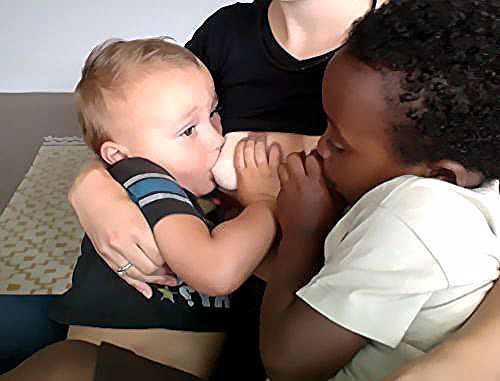 The food of a recovering baby should be rich in energy in order to restore strength, contain minerals and vitamins, the food should be well absorbed.
The food of a recovering baby should be rich in energy in order to restore strength, contain minerals and vitamins, the food should be well absorbed.
As soon as the symptoms of the disease subside, do not rush to pounce on a child with enhanced nutrition, it will take a few more days to restore digestion. Continue to follow the diet, adding lean meat and fish, cheese, eggs, boiled vegetables and fruits to it. nine0003
Ideal for casseroles, puddings, steamed cutlets, vegetable soups. Introduce fruits and vegetables into the diet and do not forget about sour-milk products that will help restore the disturbed intestinal microflora. Let during this period the food be fractional, the child eat a little. And when the body gets stronger, the child will return to a normal diet.
Choosing tactics
When feeding a sick child, parents should remember that it is impossible to force-feed a child!
We provide a diet with easily digestible products. Some parents find it difficult to feed the baby during illness, he categorically refuses to eat.


